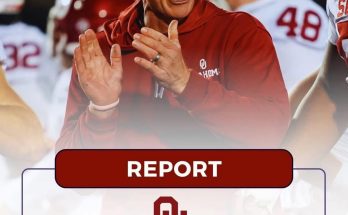The Alabama Crimson Tide’s exit from the 2025 NCAA Tournament marks the end of another thrilling college basketball season. After a solid regular season and an exciting run in the tournament, Alabama’s hopes for a championship came to a halt, leaving the team and its fans disappointed. However, in the world of college basketball, the conclusion of the season does not signify the end of the road. For head coach Nate Oats and his staff, the focus now shifts to recruiting in the transfer portal—a crucial period that can shape the future of the program.
While the disappointment of a tournament exit may linger, the transfer portal offers Alabama an opportunity to reload, improve, and potentially position itself for a stronger push next season. In this article, we’ll dive deep into the significance of the transfer portal for Alabama, how it impacts their recruiting strategy, and why this method of roster construction has become essential for modern college basketball programs like Alabama.
The Transfer Portal Revolution
The transfer portal, which officially began in 2018, has become a major player in college athletics. It allows student-athletes to declare their intent to transfer to other schools, providing coaches and teams with a unique opportunity to build their rosters quickly and efficiently. Unlike traditional recruiting, where players commit straight out of high school, the portal enables coaches to target experienced players—often upperclassmen who can contribute immediately.
In recent years, the transfer portal has had an outsized impact on college basketball. Programs that might not have the appeal of blue-chip recruiting classes have leveraged the portal to add immediate talent, creating more competitive rosters and leveling the playing field. Alabama, under the leadership of head coach Nate Oats, has been at the forefront of this new era in recruiting.
Alabama’s Approach to the Transfer Portal
Alabama’s coaching staff has embraced the transfer portal as a key component of their recruiting strategy. With Oats’ fast-paced, up-tempo style of play, the Crimson Tide’s ability to acquire experienced talent who fits into their system has been crucial for success. The importance of the portal for Alabama cannot be overstated, especially with the recent success of players like Jahvon Quinerly and Mark Sears, both of whom transferred into the program and played significant roles.
Alabama’s strategy in the transfer portal is twofold. First, the team looks to fill specific positional needs, ensuring the roster remains balanced and competitive. Second, they target players who can immediately contribute to their fast-paced, three-point heavy offensive system. This strategy has allowed Alabama to remain competitive in the SEC and nationally despite occasional struggles in recruiting top-tier high school prospects.
As the Crimson Tide shifts focus toward the transfer portal after their NCAA Tournament exit, several key positions could be targeted for improvement. For one, Alabama may look for experienced guards who can contribute both on offense and defense. The team has often struggled with ball handling and creating offensive opportunities, especially in tight games, and a seasoned point guard could be a difference-maker. Additionally, with some key players potentially entering the NBA Draft or graduating, the need for additional depth at the forward and center positions may also come into play.
Evaluating the Roster Needs
In order to maximize the effectiveness of the transfer portal, Alabama must first evaluate its current roster and identify areas where the team can improve. This assessment includes considering the departures of key players, potential NBA Draft declarations, and the overall talent pool available in the portal.
Backcourt and Playmaking
One of the most immediate needs for Alabama could be finding a capable playmaker in the backcourt. The Crimson Tide’s offense has been predicated on shooting the three-ball, but at times, the lack of a true floor general has hindered the team’s efficiency. A veteran point guard who can facilitate the offense, control the pace of the game, and provide leadership on the court could elevate Alabama’s offense to another level.
Alabama has already seen the benefits of experienced guards like Jahvon Quinerly, who transferred from Villanova in 2020 and immediately became a key contributor. The challenge moving forward will be finding another guard who fits the system and can step in to help shoulder the responsibility of running the offense.
Frontcourt Depth and Size
Another area of focus for Alabama in the portal is the frontcourt. While the Crimson Tide has had success with smaller, more athletic lineups in recent seasons, they could stand to add some size and physicality in the paint. In the SEC, where teams like Kentucky, Arkansas, and Tennessee boast large, physical frontlines, having a versatile big man could be a game-changer for Alabama, both on offense and defense.
The ideal transfer addition here would be a player who can protect the rim, rebound effectively, and provide a post presence in the half-court offense. This player might not need to be a high-volume scorer but should contribute by setting screens, finishing around the basket, and being a reliable defensive presence.
Wing Players and Versatility
In today’s college basketball, versatility is key. The ability to have wings who can shoot, defend, and switch positions on defense allows a team to adapt to various matchups. Alabama has had success with players like Brandon Miller, a freshman who quickly became one of the team’s best players. However, with the potential for Miller to leave for the NBA Draft, Alabama may need to add another wing player capable of contributing immediately. A versatile wing who can shoot the three, drive to the basket, and guard multiple positions would help solidify Alabama’s roster as they look toward next season.
The Importance of Experience and Fit
While talent is obviously important, the transfer portal allows Alabama to target not just highly skilled players but those who are a good fit for the team’s style of play. As Alabama’s system is built around up-tempo offense, three-point shooting, and aggressive defense, the Crimson Tide’s coaching staff must carefully evaluate each player in the portal to ensure they align with these principles.
One of the key benefits of the transfer portal is the ability to bring in players with collegiate experience. These players have already been through the rigors of NCAA basketball and know what it takes to compete at a high level. Furthermore, many transfer portal players are looking for new opportunities, and a program like Alabama—where success in the SEC and nationally is a realistic goal—can be an attractive option.
Recruiting in the Transfer Portal: A Double-Edged Sword
While the transfer portal presents a tremendous opportunity for Alabama, it’s not without its challenges. The portal is extremely competitive, and top-tier players are often courted by multiple schools, especially those with significant resources or national championship aspirations. The Crimson Tide will need to be strategic in how they approach potential transfers, balancing their offers with the reality that some players may choose other programs.
Moreover, relying too heavily on the transfer portal can have its risks. Building a program solely through transfers can lead to a lack of continuity, as players come and go quickly. Ideally, Alabama will continue to blend high school recruiting with transfers to maintain a balanced, sustainable program.
A Critical Offseason for Alabama
The Crimson Tide’s exit from the 2025 NCAA Tournament represents both an end and a new beginning. As Alabama reflects on the season that was, it must quickly shift focus toward the offseason and, more specifically, the transfer portal. With roster changes on the horizon and the need for key additions, the transfer portal presents Alabama with an opportunity to strengthen its roster and remain a force in college basketball.
With Nate Oats at the helm, Alabama’s ability to attract and develop talent will be crucial to their future success. As the transfer portal continues to shape the landscape of college basketball, Alabama will need to make smart, strategic decisions to maintain its position as one of the top programs in the SEC and the country.


